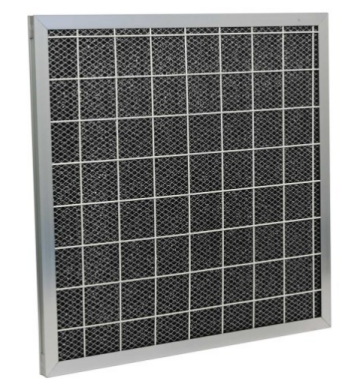02
2025
-
07
Why Activated Carbon Air Filters Are Trending in Commercial Ventilation Systems: Demand Growth Insights
Activated carbon air filters are essential for fresh air and exhaust purification in HVAC systems, with growing demand in commercial and industrial applications.
Author:
Global Demand Surges for Activated Carbon Air Filters in Commercial Ventilation Systems
With rising concerns over indoor air quality and stricter emissions regulations, activated carbon air filters are becoming a vital component in commercial and industrial ventilation systems worldwide. These filters are now widely used in both fresh air purification and exhaust gas treatment, particularly in large-scale central air conditioning (HVAC) setups.

In commercial buildings, hospitals, airports, and manufacturing facilities, air pollution caused by volatile organic compounds (VOCs), odors, chemical fumes, and fine particulates has posed a significant challenge. Activated carbon air filters, with their porous structure and high adsorption capacity, are proving highly effective in trapping these pollutants at the source. Industry analysts say the demand for such filters is expected to grow by 6.2% annually through 2030.
One of the key areas of application is pre-filtration of fresh air in central air conditioning systems, where activated carbon filters serve as the first defense layer to prevent harmful gases from entering the indoor environment. These filters are often paired with HEPA or fiberglass filters in a multi-stage purification system, significantly improving air cleanliness and reducing the operational burden on downstream filtration units.
Meanwhile, waste gas purification from industrial processes—such as those in electronics, chemical production, and food processing—also heavily relies on activated carbon filters to meet environmental discharge standards. This is especially relevant in countries tightening their national clean air regulations, including China, Germany, and South Korea.
Manufacturers are now innovating with modular filter designs and advanced carbon composites to extend service life and improve airflow efficiency. According to Beijing-based air quality expert Liu Jun, “New formulations using impregnated carbon particles allow targeted removal of sulfur dioxide, ammonia, and formaldehyde, making them ideal for high-demand sectors.”
As cities grow and buildings become more airtight, the importance of clean indoor air will only increase. Activated carbon air filters—once seen as optional—are now being integrated as standard equipment in building ventilation design. With climate change intensifying external air pollution, experts believe the activated carbon filtration market is positioned for stable long-term growth.
Related news
2024-04-16
2022-01-10









